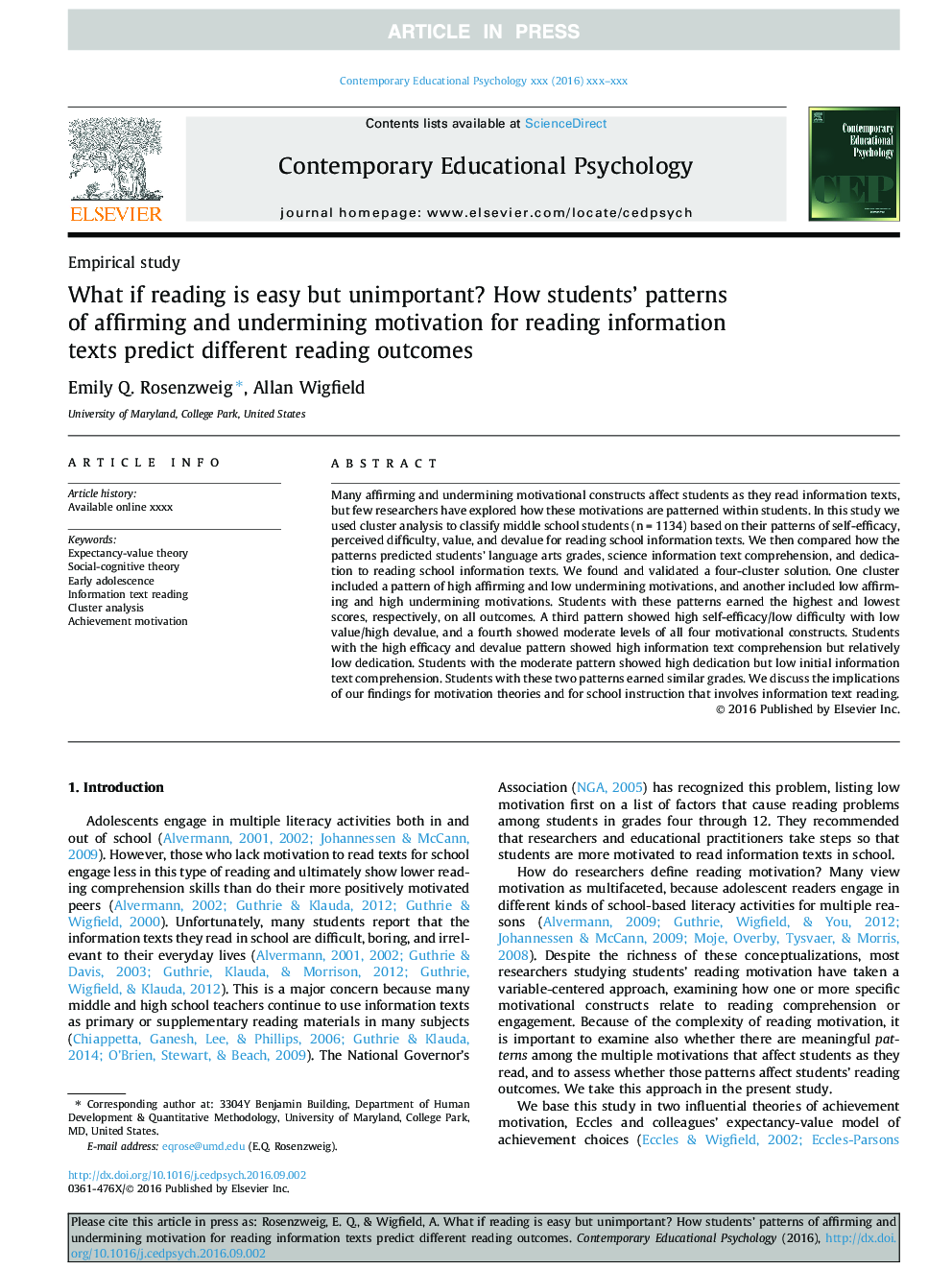| Article ID | Journal | Published Year | Pages | File Type |
|---|---|---|---|---|
| 4937928 | Contemporary Educational Psychology | 2017 | 16 Pages |
Abstract
Many affirming and undermining motivational constructs affect students as they read information texts, but few researchers have explored how these motivations are patterned within students. In this study we used cluster analysis to classify middle school students (n = 1134) based on their patterns of self-efficacy, perceived difficulty, value, and devalue for reading school information texts. We then compared how the patterns predicted students' language arts grades, science information text comprehension, and dedication to reading school information texts. We found and validated a four-cluster solution. One cluster included a pattern of high affirming and low undermining motivations, and another included low affirming and high undermining motivations. Students with these patterns earned the highest and lowest scores, respectively, on all outcomes. A third pattern showed high self-efficacy/low difficulty with low value/high devalue, and a fourth showed moderate levels of all four motivational constructs. Students with the high efficacy and devalue pattern showed high information text comprehension but relatively low dedication. Students with the moderate pattern showed high dedication but low initial information text comprehension. Students with these two patterns earned similar grades. We discuss the implications of our findings for motivation theories and for school instruction that involves information text reading.
Keywords
Related Topics
Social Sciences and Humanities
Psychology
Applied Psychology
Authors
Emily Q. Rosenzweig, Allan Wigfield,
